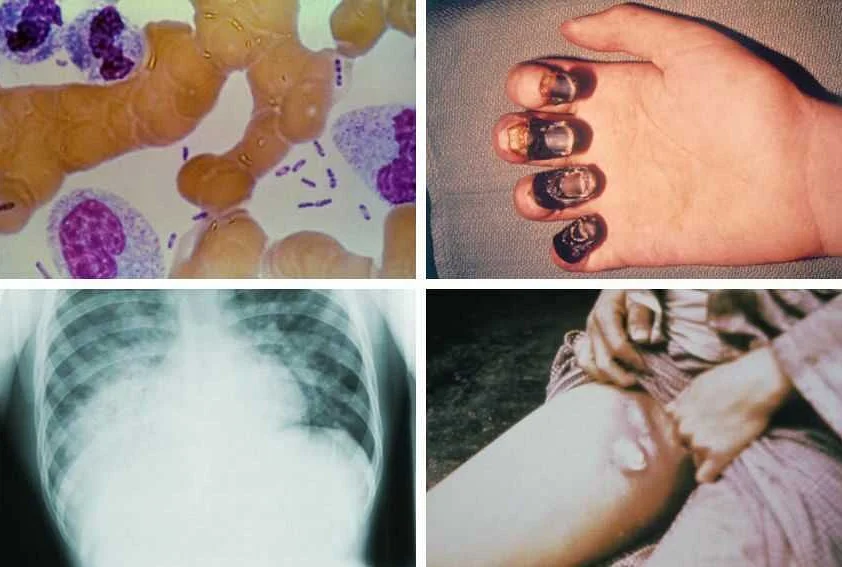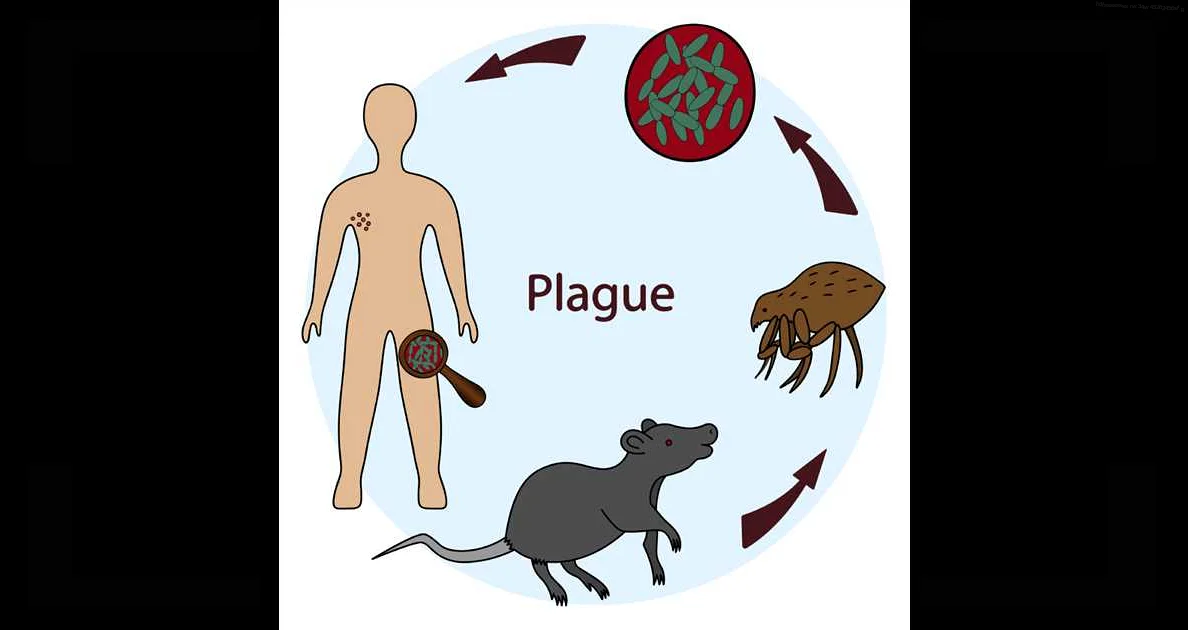Plague and Other Infections
Содержимое
Discover everything you need to know about the plague and other infectious diseases. Learn about their causes, symptoms, and treatments, as well as tips for prevention and staying healthy. Stay informed and prepared with our comprehensive guide.
Plague, along with other infectious diseases, has plagued humanity throughout history. Understanding the causes, symptoms, and prevention of these deadly infections is crucial in order to protect ourselves and our communities.
Plague, caused by the bacterium Yersinia pestis, is primarily transmitted through fleas that infest rodents. When an infected flea bites a human, the bacteria enter the bloodstream and can cause severe illness. There are three forms of plague: bubonic, septicemic, and pneumonic. Bubonic plague is characterized by swollen lymph nodes, while septicemic plague affects the blood and can lead to tissue death. Pneumonic plague, the most dangerous form, affects the lungs and can be transmitted through respiratory droplets.
Aside from plague, there are numerous other infectious diseases that pose a threat to public health. These include but are not limited to influenza, tuberculosis, HIV/AIDS, and Ebola. Each of these diseases is caused by a different pathogen and has its own set of symptoms and modes of transmission. However, the importance of early detection, prompt treatment, and preventive measures cannot be overstated.
Preventing the spread of infections requires a multifaceted approach. Basic hygiene practices such as handwashing, covering the mouth and nose when coughing or sneezing, and avoiding close contact with sick individuals are essential. Vaccination plays a crucial role in preventing certain infections, while antibiotics are often used to treat bacterial infections. Additionally, public health measures such as quarantine, contact tracing, and educating the public about the risks and prevention of infections are vital in controlling outbreaks.
Understanding Plague and Other Infections

Plague is a highly infectious disease caused by the bacterium Yersinia pestis. It is primarily spread through fleas that live on rats and other small mammals. The infection can be transmitted to humans through bites from infected fleas or through direct contact with bodily fluids or tissues from infected animals.
The symptoms of plague can vary depending on the type of infection, but they often include fever, chills, weakness, and swollen lymph nodes. In severe cases, plague can cause organ failure and death.
In addition to plague, there are many other infectious diseases that can affect humans. These include viral infections such as influenza, bacterial infections such as tuberculosis, and fungal infections such as candidiasis. Each type of infection has its own specific causes, symptoms, and methods of transmission.
Prevention and control of infections is crucial to reduce the spread of diseases. This can be achieved through various measures, including good hygiene practices such as regular handwashing, vaccination against preventable diseases, and the use of personal protective equipment when necessary.
It is important for individuals to educate themselves about the causes, symptoms, and prevention of infectious diseases in order to protect their own health and the health of others. By understanding how infections are spread and taking appropriate precautions, we can minimize the impact of these diseases on our communities.
Causes of Plague and Other Infections
Plague and other infections are caused by various microorganisms, including bacteria, viruses, and fungi. The specific microorganism responsible for a particular infection can vary depending on the disease. Here are some common causes of plague and other infections:
Bacteria: Many infections are caused by bacteria, such as Yersinia pestis, which is responsible for causing plague. Other bacterial infections include streptococcus, staphylococcus, and tuberculosis.
Viruses: Viruses are another common cause of infections. Examples include the influenza virus, HIV, and the coronavirus responsible for COVID-19. Viral infections can be spread through airborne particles, bodily fluids, or contaminated surfaces.
Fungi: Certain types of fungi can also cause infections, such as Candida, which can cause yeast infections. Fungal infections can occur on the skin, in the respiratory system, or in other parts of the body.
Parasites: In addition to bacteria, viruses, and fungi, parasites can also cause infections. Examples include malaria, caused by the Plasmodium parasite, and trichomoniasis, caused by the Trichomonas vaginalis parasite.
Transmission: Infections can be transmitted through various means, including direct contact with an infected person or their bodily fluids, contaminated food or water, or through vectors such as mosquitoes or ticks.
Weak immune system: Having a weakened immune system can also increase the risk of infection. Certain health conditions, such as HIV/AIDS or autoimmune disorders, can weaken the immune system and make individuals more susceptible to infections.
It is important to practice good hygiene, such as washing hands regularly, covering the mouth and nose when sneezing or coughing, and avoiding close contact with sick individuals, to reduce the risk of infection.
Symptoms of Plague and Other Infections

Plague and other infections can cause a variety of symptoms, which can range from mild to severe. It is important to recognize these symptoms in order to seek appropriate medical attention and prevent the spread of disease.
Fever: One of the most common symptoms of plague and other infections is a high fever. A persistent fever can indicate that the body is fighting off an infection.
Chills: In addition to fever, chills are often experienced with plague and other infections. Chills are characterized by a sudden feeling of coldness or shivering.
Headache: Many individuals with plague and other infections may experience severe headaches. These headaches can be debilitating and may be accompanied by other symptoms such as sensitivity to light or sound.
Fatigue: Fatigue is a common symptom of plague and other infections, as the body works to fight off the infection. Individuals may experience a lack of energy or motivation.
Muscle aches: Plague and other infections can cause muscle aches and body soreness. These aches may be generalized or localized to specific areas of the body.
Cough: A persistent cough is another common symptom of plague and other infections. The cough may be dry or productive, and can be accompanied by other respiratory symptoms such as shortness of breath or chest congestion.
Swollen lymph nodes: In some cases, plague and other infections can result in swollen lymph nodes. Lymph nodes may become tender, swollen, and painful to the touch.
Gastrointestinal symptoms: Plague and other infections can also affect the gastrointestinal system, leading to symptoms such as nausea, vomiting, diarrhea, or abdominal pain.
These are just a few examples of the symptoms that can be associated with plague and other infections. It is important to note that symptoms can vary depending on the specific infection and individual factors. If you experience any of these symptoms, it is important to consult a healthcare professional for an accurate diagnosis and appropriate treatment.
Prevention of Plague and Other Infections

Preventing plague and other infections is crucial for maintaining public health and preventing the spread of diseases.
Here are some preventive measures that can be taken:
1. Vaccination: Getting vaccinated is one of the most effective ways to prevent infections such as plague. Vaccines stimulate the immune system to produce antibodies that can fight off the disease-causing pathogens.
2. Practicing good hygiene: Regularly washing hands with soap and water, especially before eating or handling food, can help prevent the transmission of infections. Covering the mouth and nose with a tissue or elbow when coughing or sneezing can also prevent the spread of pathogens.
3. Avoiding close contact with infected individuals: Plague and other infections can be transmitted through close contact with infected individuals. It is important to maintain a safe distance and avoid physical contact, especially with those who are showing symptoms of an infection.
4. Keeping the environment clean: Regularly cleaning and disinfecting surfaces, especially in high-traffic areas and commonly touched objects, can help reduce the risk of infection transmission.
5. Using insect repellents: Infections such as plague can be transmitted through insect bites. Using insect repellents, wearing long-sleeved clothing, and avoiding areas with a high concentration of insects can help prevent exposure to disease-causing vectors.
It is important to note that these preventive measures may vary depending on the specific infection. Therefore, it is essential to stay informed about the latest guidelines and recommendations provided by healthcare professionals and public health authorities. By following these preventive measures, we can collectively work towards reducing the risks associated with plague and other infections.
The Importance of Early Diagnosis

Early diagnosis is crucial in effectively managing and treating infections such as plague. Identifying the presence of an infection as early as possible allows healthcare professionals to implement immediate measures to prevent the spread of the disease and provide appropriate treatment.
With early diagnosis, healthcare providers can quickly isolate infected individuals, reducing the risk of transmission to others. This is especially important in the case of highly contagious infections such as the plague, where rapid containment can mean the difference between a localized outbreak and a widespread epidemic.
In addition to limiting the spread of the infection, early diagnosis enables healthcare professionals to start treatment promptly. Many infections, including the plague, can cause severe complications and even death if left untreated or if treatment is delayed. By diagnosing the infection early, healthcare providers can initiate the appropriate course of treatment, which may include antibiotics or antiviral medications, to prevent further progression of the disease and improve patient outcomes.
Moreover, early diagnosis allows for the implementation of preventive measures to protect individuals at high risk of infection. By identifying individuals who have been in close contact with the infected person, healthcare providers can offer prophylactic treatment or vaccinations to mitigate the risk of developing the infection.
Overall, early diagnosis plays a vital role in the effective management and prevention of infections. It saves lives, reduces the spread of disease, and improves the chances of successful treatment. Therefore, it is essential for individuals to seek medical attention promptly when experiencing symptoms or suspecting an infection, and for healthcare systems to prioritize and facilitate early diagnostic testing.